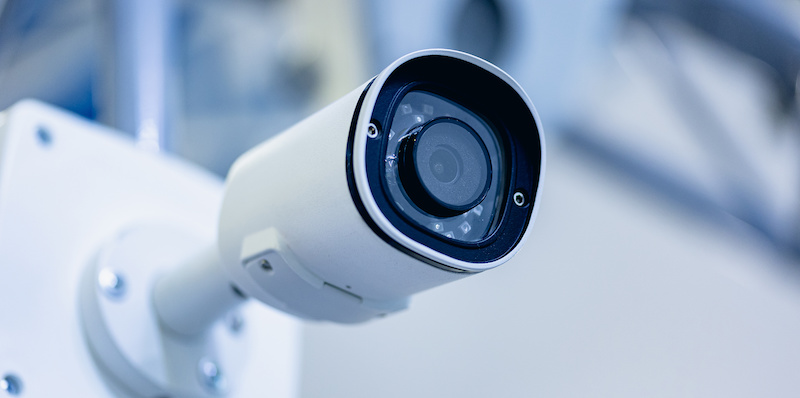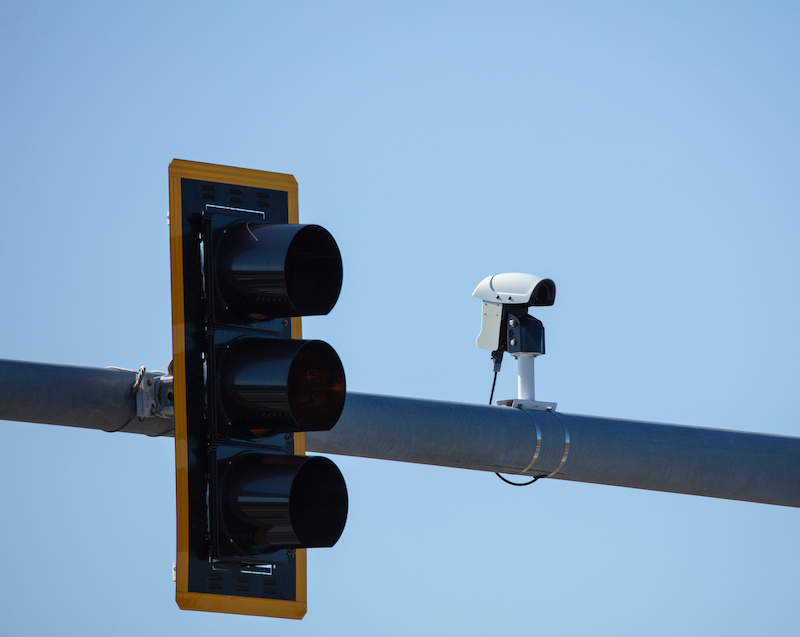Ever found yourself waiting at a red light, eyes darting to that box perched high above the intersection? Yep, we’re talking about traffic cameras.
Now picture this: you’ve just breezed through an amber light as it flickers to red and then… flash! You wince; your rearview mirror filled with an accusing glare. A fine is likely on its way.
You might have mixed feelings about these silent watchers of our roads. They seem ubiquitous yet invisible until they catch us off-guard – a little like Big Brother’s less invasive cousin.
This post delves into the world of traffic cameras: their workings, role in road safety, legal implications, and more importantly how they can affect you directly or indirectly every day.
Table Of Contents:
- Role of Traffic Cameras in Monitoring Road Safety
- Legal Implications of Traffic Camera Footage
- Use of Traffic Camera Footage in Car Accident Cases
- The Impact of Traffic Cameras on Driver Behavior
Role of Traffic Cameras in Monitoring Road Safety
Traffic cameras play a pivotal role in maintaining road safety. They’re the unblinking eyes on our roads, tirelessly recording traffic flow and identifying violations.
The primary function of these digital sentinels is to monitor intersections for signs of dangerous driving behavior. This includes tracking vehicles that speed or run red lights. When a breach of the law is captured on film, it can be used by police to implement traffic regulations effectively. According to Federal Highway Administration research, traffic cameras have helped reduce intersection crashes by up to 40%.
But how do they work? Simply put, these devices use high-speed photography combined with advanced detection systems that can sense when a vehicle enters an intersection at the wrong time. Once triggered, they capture clear images or video footage – enough evidence for authorities if legal action needs to be taken.

Deterrent Effect: Changing Driver Behavior
Beyond catching violators in the act, there’s another benefit worth mentioning – changing driver behavior. The presence of traffic cameras has been shown to significantly deter reckless driving behaviors, just like having your teacher watching over you during exams keeps cheating at bay. Knowing you’re being watched tends to make people follow rules more strictly.
Improved Flow Management & Emergency Response Times
In addition to enhancing safety through accountability and deterrence, these “eyes on the road” also contribute towards smoother traffic management as well as faster emergency response times. By analyzing real-time data, traffic management centers can quickly react to changes in traffic patterns and adjust signals accordingly for optimal flow.
Moreover, during emergencies like accidents or natural disasters, the live feed from these cameras lets responders size up situations more accurately and respond faster. The Federal Highway Administration reports that this information can cut down incident response time by as much as 20%.
Legal Implications of Traffic Camera Footage
Debates have been raging recently about the legality of traffic cameras. But what does the law say about traffic camera footage? Let’s delve into this question.
The admissibility of traffic camera footage in court varies from state to state. Some states accept such evidence readily, while others impose more stringent conditions for its use.
Footage as Evidence
Unbiased documentation of the events preceding the incident may be provided by traffic camera footage, making it a useful piece of evidence in many personal injury cases, especially those concerning car accidents.
This means that if you were involved in an accident and believe another party was at fault, getting hold of relevant traffic camera footage could help prove your case. However, bear in mind that this process may not always be straightforward – there might be hoops to jump through before obtaining the video recording.
Gaining Access to Footage
A common misconception is that anyone can easily get access to traffic cam recordings after an incident on the roadways. In reality, though, acquiring such records often involves specific procedures or regulations set by local jurisdictions or even individual agencies operating these systems.
The Impact on Privacy
An important point worth considering when discussing legal implications is privacy concerns associated with public surveillance devices like traffic cams. While they are designed primarily for public safety, the potential misuse of these systems can pose significant threats to personal privacy. Therefore, strict regulations are necessary to balance security needs with respect for individual rights.
Remember, laws around traffic camera footage usage may vary by jurisdiction. It is prudent to seek counsel from a lawyer when managing such matters.
Use of Traffic Camera Footage in Car Accident Cases
Traffic camera footage can play a crucial role as evidence in personal injury cases following car accidents. But how does it work?
The Value of Visual Evidence
Evidence law allows for visual aids like traffic camera footage to be used in court proceedings because they provide objective, unaltered records of events. This type of ‘eye-witness’ is not subject to human error or bias and could give us more accurate accounts than actual eye-witnesses might offer.
Captured images from these cameras help illustrate what happened before, during, and after an incident which makes understanding complex scenarios easier for everyone involved.
Finding Relevant Footage
To use traffic camera footage effectively, you need to get hold of relevant video clips first – easier said than done. While many cities have extensive networks of traffic cameras, obtaining specific recordings may require official requests or even legal action depending on local regulations.
A skilled attorney knows exactly where to look and how to obtain these videos swiftly so that critical evidence doesn’t disappear over time due to routine data purging policies adopted by municipalities or state agencies managing such surveillance systems.
The Silver Injury Law Advantage
At Silver Injury Law, we’ve helped countless clients navigate the complexities of traffic camera footage usage in their car accident cases. Our experienced team is adept at acquiring and analyzing video evidence to bolster your case.
We believe that you should focus on healing after an accident while we take care of everything else – from gathering necessary evidence like traffic cam footage to presenting them effectively before the court.
The Impact of Traffic Cameras on Driver Behavior
It’s plain to see that traffic cameras are a potent means of keeping roads safe. But, have you ever thought about how these devices affect driver behavior? It turns out, their impact is more significant than you might think.
Studies show drivers tend to be more cautious when they know they’re being watched. This “Big Brother effect,” as it’s sometimes called, can lead to safer driving habits and fewer accidents on the roads.
The ‘Halo Effect’
A surprising phenomenon related to live traffic cameras is the so-called ‘halo effect.’ This term refers to areas near camera locations experiencing a decrease in violations and accidents not just directly under the camera gaze but also nearby. Drivers adjust their behavior knowing there could be a camera around any corner.
Influence Beyond Fines
Traffic cameras do more than dish out fines; they help cultivate an environment where obeying traffic rules becomes second nature. When drivers become aware of surveillance, they adapt their behaviors, reducing speed or avoiding running red lights even when no police officers are present – all because of those handy little gadgets perched high above intersections.
Beyond Immediate Safety: Long-Term Changes in Driving Habits
This constant awareness doesn’t just promote immediate safety—it also contributes towards long-term changes in driving habits. Over time, consistent adherence to traffic laws leads people to internalize good driving practices. Evidence has been provided to support the idea that consistent adherence to traffic laws leads people to internalize good driving practices.
So next time you spot that traffic camera at an intersection, remember it’s more than just an electronic eye—it’s your silent partner in road safety.
If you or a loved one have been in an accident, don’t hesitate to contact us immediately. Beyond car accidents, we specialize in pedestrian accidents, bicycle accidents, commercial vehicle accidents, and so much more.




